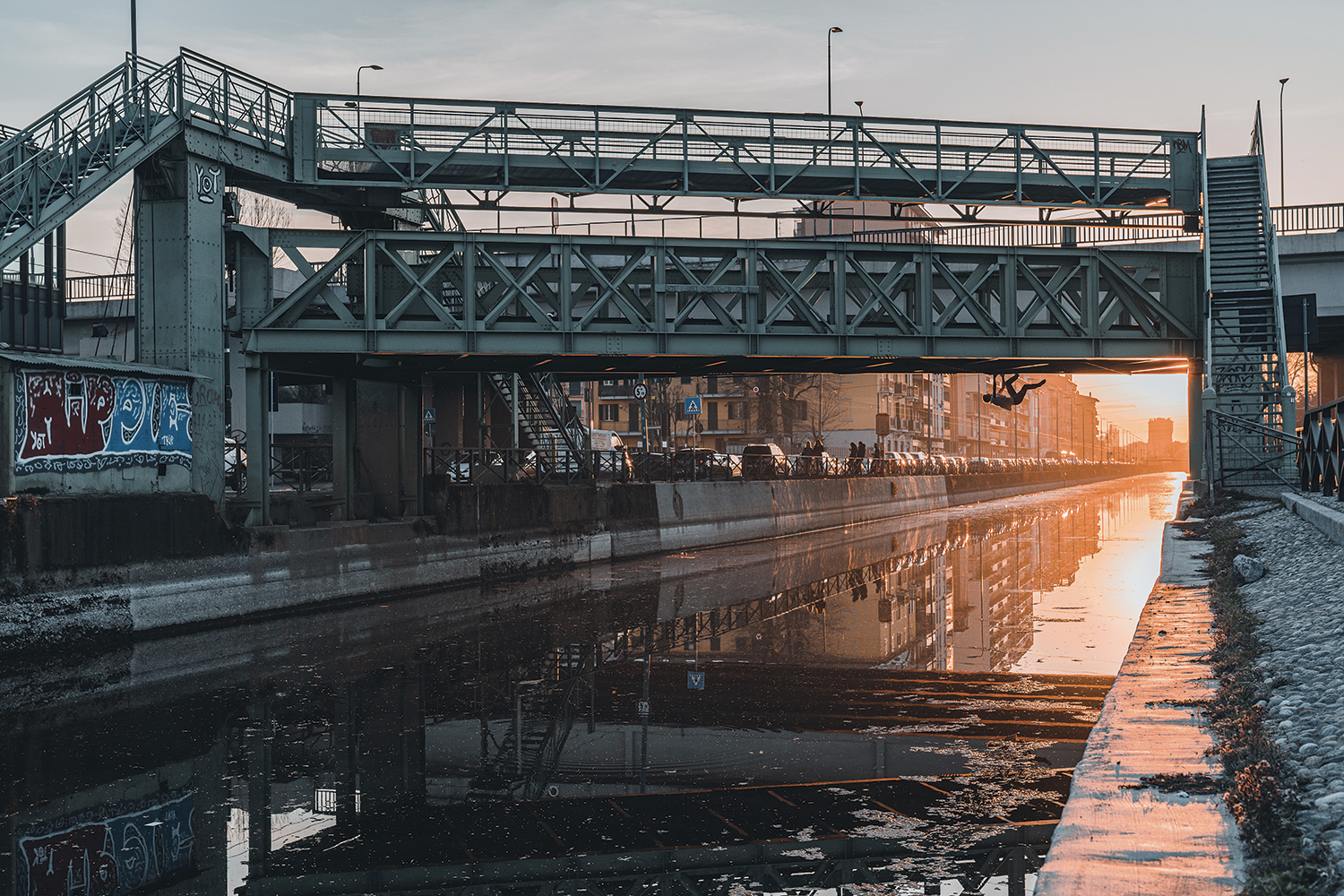
My grandfather invented the street bouldering
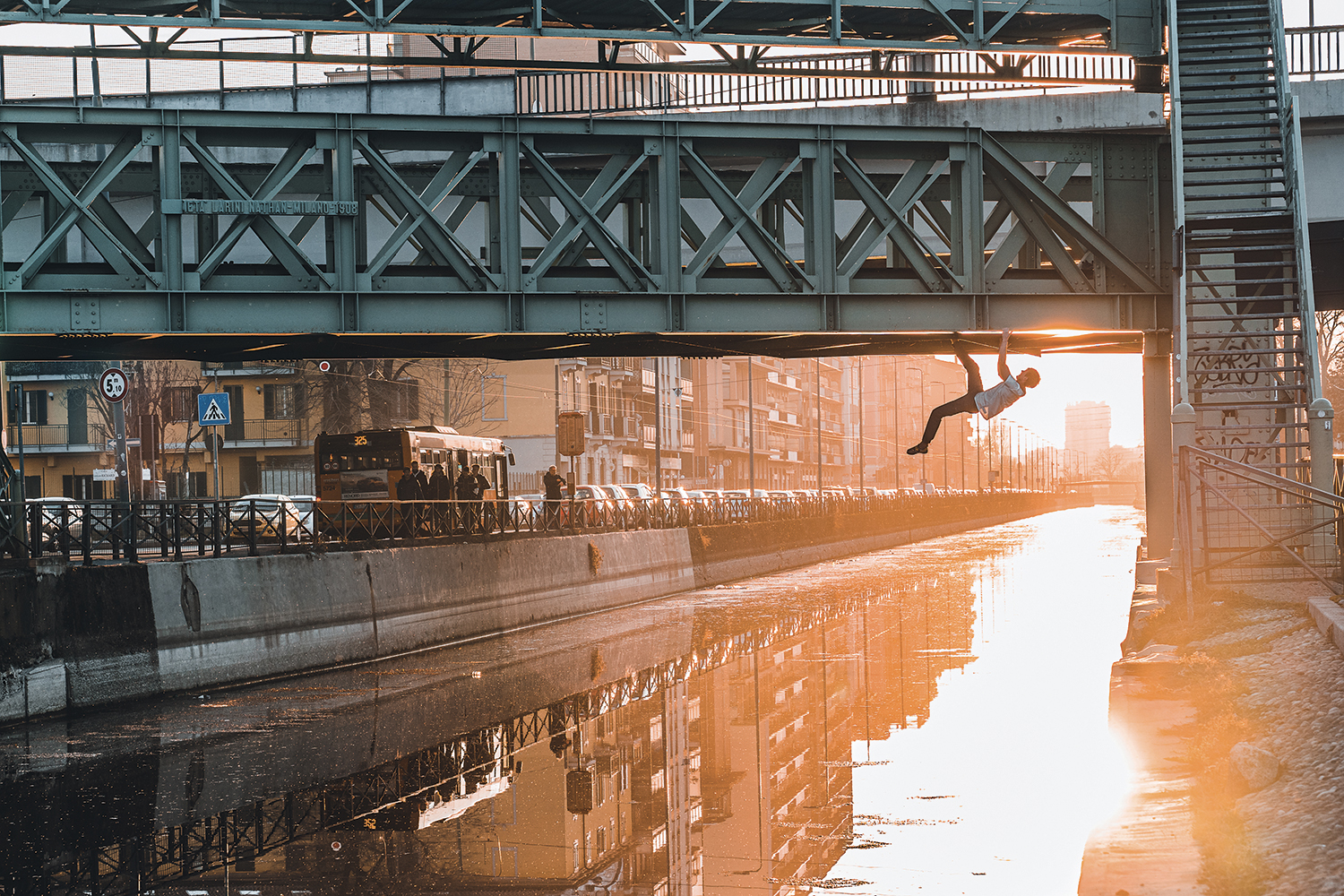
Many people don’t know that, but an important climbing movement was born and developed in the city, not on a cliff or in high mountains. To be honest this movement, if you can call it like this, was born even outside gyms, but only for the simple fact that gyms, as we know them today, did not exist yet. Do you remember the story of mountaineers who came down from the mountains in Arco to start the free climbing game? In this sense, we could say that from that moment climbing has evolved, at least in some way, into the city.
For example in Trento I met climbers and mountaineers from the 1960s and 1970s who, when they were younger, met under the arches of the railway in Via Gocciadoro to train, perhaps late in the evening only illuminated by a construction lamp between a bottle of wine and the other. The city turned into the mountain. There were hundreds of problems to solve in a few square meters of wall, but it was necessary to look at it with different eyes. There were times when you also trained on houses, buildings or infrastructure. There were other times when finding the most original thing to climb became a source of pride, as if it were an art form to be inspired by to have some fun.
These small groups of people were labeled with the name of “awkward”, “good for nothing”, “freak”. It’s fun to see how it turned out then, years later: it looks like as if my grandfather invented street bouldering. The lacking of indoor gyms, cars with which to move and light to climb at the cliff, made them use the most immediate, simple, fast and effective thing: people would go out of the house to climb on any wall, it was the only thing the taxpayers could afford.
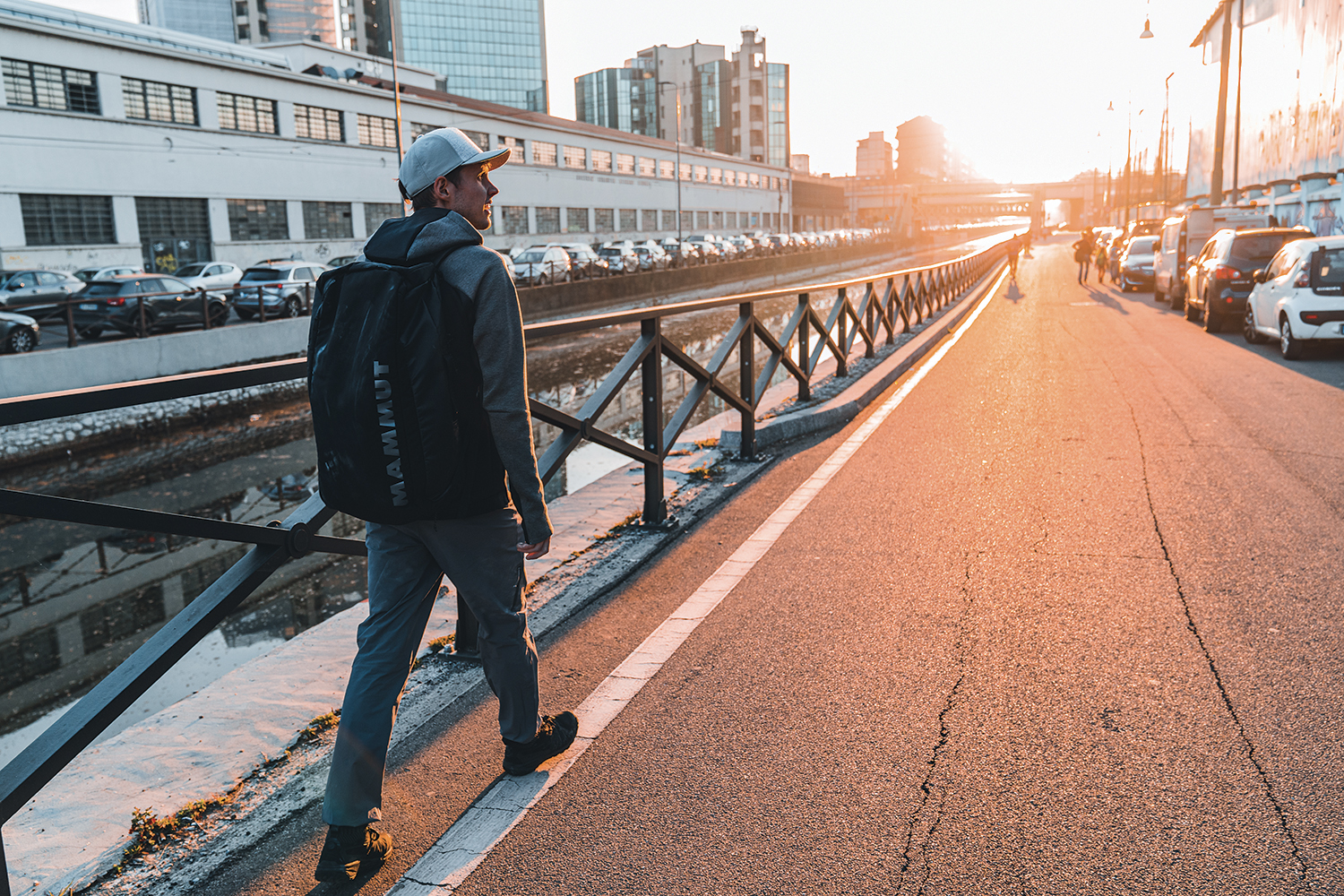
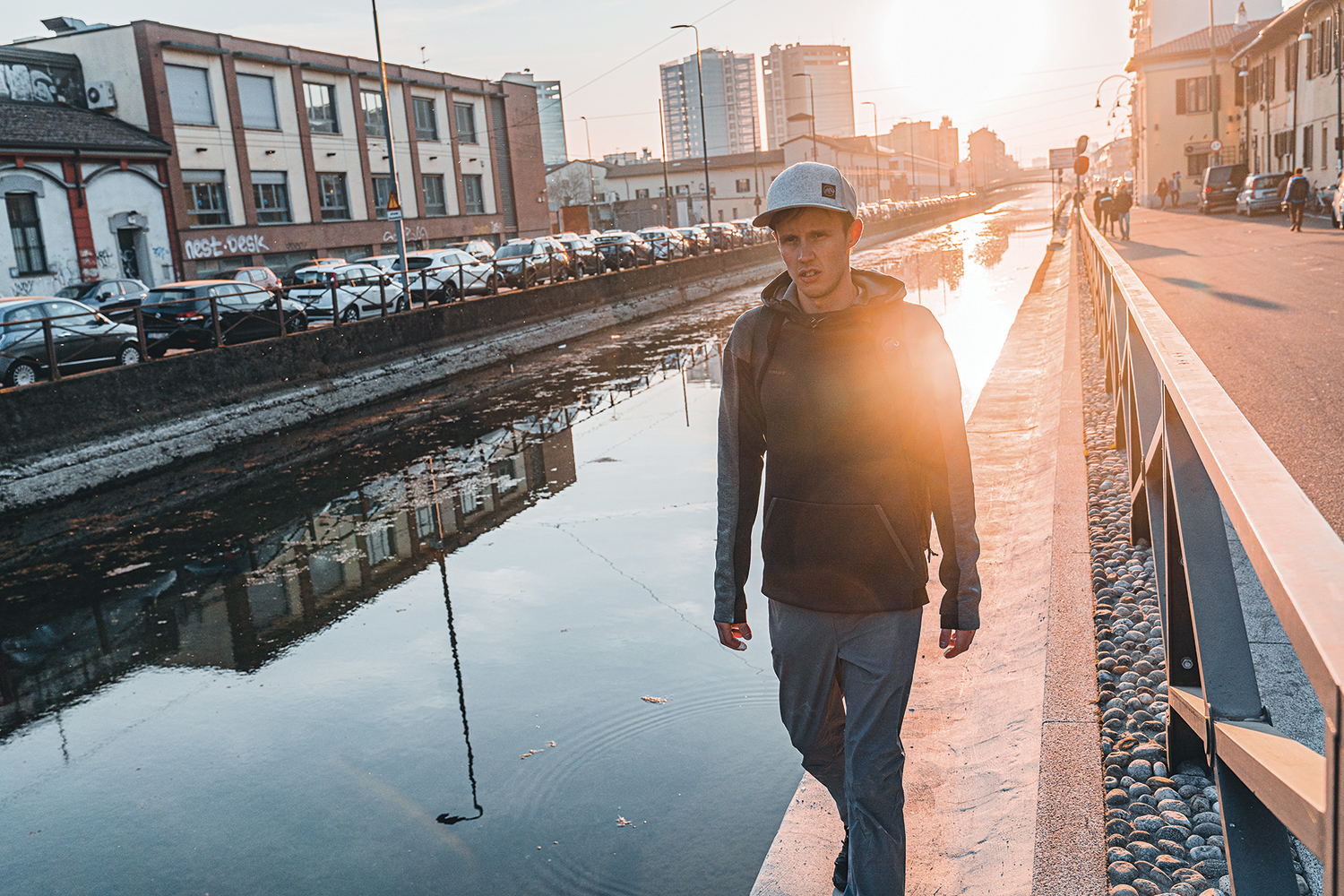
This little introduction was more useful to me than to you to remind me of the cyclical nature of things, because time is absolutely necessary to perfect any event and action. In this case, something as simple as a training under a porch has proved to be, years later, the vision of a modern trend that is much practiced as street bouldering.
With the fourth episode of the Mammut Elements series, Thomas and I wanted to inspire this phenomenon and add the artistic element of the murals. The suburbs of Milan and Reggio Emilia turned out to be a perfect playground for famous climbers like Michael Piccolruaz, a Mammut athlete and part of the Italian National Climbing Team. We wanted to call this last episode “Wonderwalls”, literally “Walls of Wonders”. Architecture and sport mix together like two colors in a beautiful shade, at least in photography. The reality is that the rhythm of the city is a disordered succession following a certain frequency of any form of movement, which takes place during our everyday life.
Its notes are the sounds, the noises. Time is instead beaten by an inexorable and unstoppable macroeconomic mechanism. Sometimes there’s a pause, a brief interval between one noise and another, of a casual and fatal nature. That music made of different and disordered notes suddenly resumes, stronger than before. We distinguish the different timbres of each instrument that is part of that clumsy and mechanical orchestra, wether it is a car engine, a loudspeaker case, a cell phone ringtone.
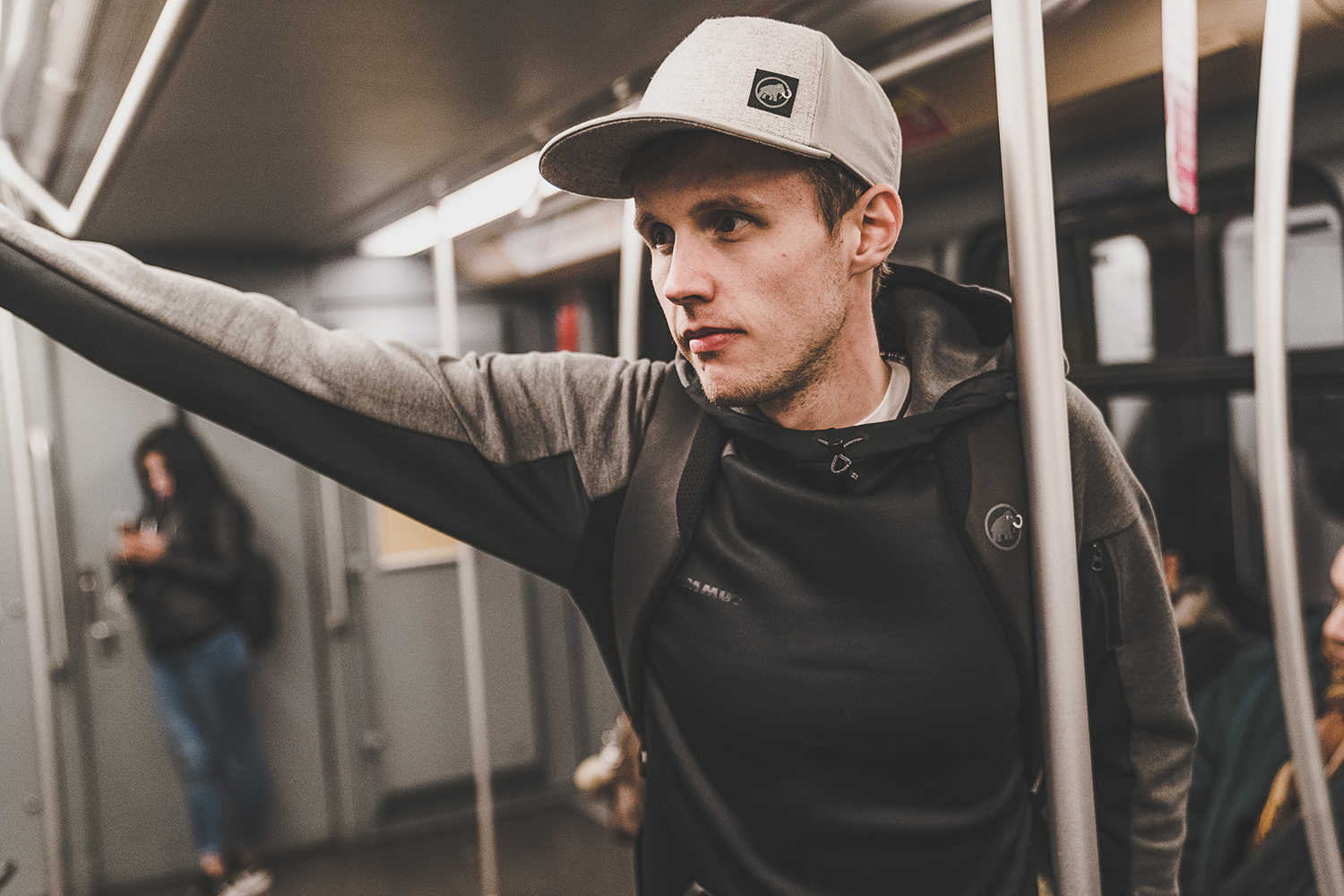
And yet the result is a succession of coherent sounds, perceived almost according to a logic, in a reality where logic, perhaps, has never existed. Sometimes, not always, but sometimes it is necessary to let yourself be taken away by instinct without asking the logic of things. This, logically speaking, is denying our very essence, the rational essence of the human being. Fortunately, we are also beings with a stray and wild nature, and sometimes we need to follow our instinct to continue to progress, in the mind, or at least in the heart. Because there is nothing more irrational than to lift your feet from the ground when you have been given to walk. Because there is nothing more irrational than climbing.